|
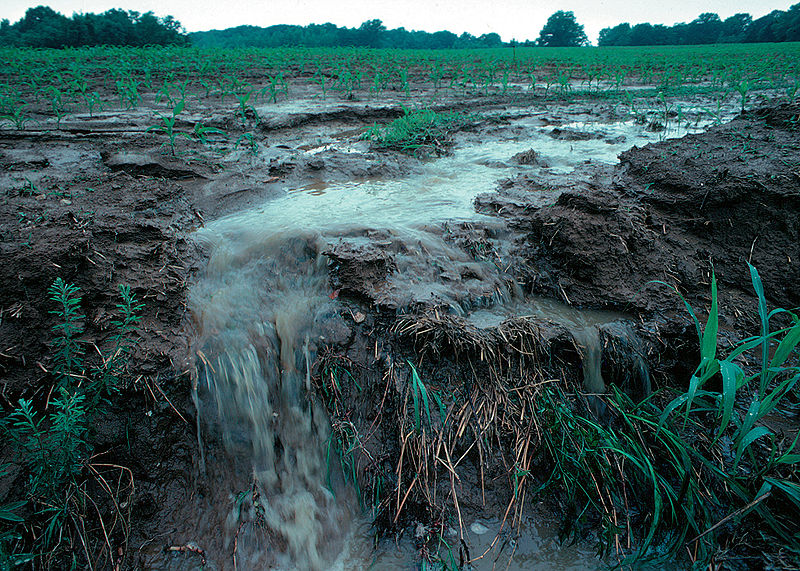
Getting to the Roots of Nitrate Pollution
Ag Dept, Legislature Consider Groundwater Solutions
Last Tuesday, Governor Mark Dayton laid out a framework for the Groundwater Protection Rule to limit the movement of nitrates into Minnesota’s waters as part of the Department of Agriculture’s proposed work to implement the Groundwater Protection Act. The proposal aims to limit the overuse of nitrogen fertilizer in targeted agricultural areas to stave off some of the worst nitrate contamination affecting Minnesota communities and drinking water.
Acting on this contamination soon is crucial as more than 50 community water systems serving more than 225,000 people around Minnesota are currently working with the state to reduce elevated nitrate levels in their water systems. For now, they rely primarily on upgrades to treatment technology in their systems, addressing the symptom of nitrate pollution, not the cause: the high levels of nitrogen runoff and filtration from our state’s agriculture systems that are tainting our waters.
The Problem
Upgrades to water treatment facilities and maintenance can run up enormous costs for communities, with some costs per household ranging in the thousands of dollars – a tall order for many small towns. And Minnesotans with private wells, of which ten percent of those tested already exceed health risk limits for nitrates, face enormous costs of their own.
Our communities don’t have time to delay drinking water solutions. If the nitrate contamination in our water supplies isn’t addressed, the health and cost consequences will add up. Exposure to high levels of nitrates causes “blue baby syndrome” – a condition that causes serious breathing and circulatory problems in infants. Exposure has also been linked to certain types of cancer in adults. And once nitrates enter a groundwater supply, they don’t break down unless treated. Their prevalence in our drinking water will continue to rise without strong action.
The Proposed Rule
The Department of Agriculture’s Groundwater Protection Rule takes steps in the right direction, and it represents an improvement over the initial draft rule the Department proposed last year. We are especially glad to see that the Department moves to use their authority to protect the groundwater recharge areas for community drinking water supply areas around the state.
The framework of the rule would restrict nitrogen fertilizer use in the fall and winter in certain vulnerable areas, and implement special protections for wellhead areas of communities that are already struggling with nitrate contamination. But it’s disappointing that this rule does not extend protections to those Minnesotans who may need it most — private well-owners. And the pace of change in the rule is slow. Minnesotans shouldn’t need to wait a decade or more for clean drinking water.
Still, the proposed rule is a good opportunity to start developing drinking water protections that work for communities, farmers, and well owners across the state. MEP and our partners stand ready to collaborate with the Department of Agriculture on creating stronger drinking water protections for all of Minnesota’s communities and families.
Unfortunately, some members of the legislature are seeking to move in the opposite direction, pushing a bill that would prohibit the Department of Agriculture from regulating nitrogen fertilizer and protecting our water.
How You Can Help
It’s critical that we act now and act boldly to protect our drinking water, for the infants at risk of health problems and the communities and rural citizens struggling to pay the cost to treat their contaminated water. If you want to stand up for our drinking water, there are several steps you can take:
- Call your legislators to tell them you oppose any attempt to challenge the state’s authority to protect our health from groundwater pollution.
- In May, the Department of Agriculture will open a comment period on the nitrogen rule plan and hold hearings throughout the summer. Share your comments online or at a hearing, and help make sure the revised rule holds water and protects drinking water for all Minnesotans.
- Help educate the public and policymakers on programs that would help transition our agriculture to a more water-friendly system of agriculture by raising cover crops and perennials that restore soil and keep our water healthy. Check out the Forever Green Initiative and the Working Lands Watershed Restoration Program, which would help advance these healthy practices and increase their productivity and economic viability.
The strongest way to advocate for Minnesota’s health and natural resources is to share stories with lawmakers in person at meetings and hearings. If you live in a community that has struggled with contaminated water, let us know! We can help you get in touch with your legislators and be a strong advocate for Minnesota’s waters – contact us at info@mepartnership.org or call 651-290-0154.
MEP Press Release: Statement on Governor Dayton’s Proposed Groundwater Protection Rule

|
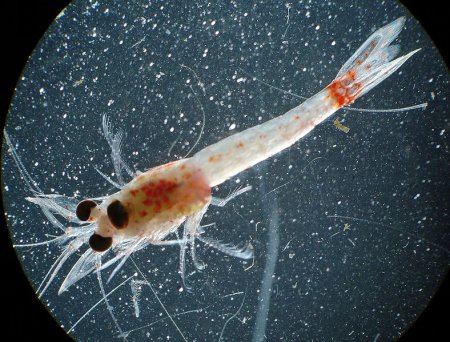 |
Bloody red shrimp a reminder that Great Lakes need stronger protections
(From Star Tribune, by Steve Morse and Molly Flanagan) — News broke last month that a solitary bloody red shrimp (hemimysis anomala), an aquatic invasive species not found before in Lake Superior, was discovered in the Twin Ports Harbor (“Worries of a new invasive species,” February 20). With ship ballast tanks being the top means of moving invasive species across the globe and around the Great Lakes, this news is disappointing but not a surprise.This finding is a stark reminder of the unknowns floating around in ship ballast tanks waiting to be emptied in ports around the region. >>Read More.
|
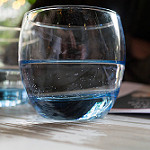 |
Safe drinking water must be a shared value in Minnesota
(From Star Tribune) — It’s hard to persuade residents of a state whose very name bespeaks an abundance of water to worry about water quality. Maybe that’s why three successive governors did little to implement a 1989 statute empowering state agencies to “promote best practices … to the extent practicable” to minimize groundwater pollution. Then again, Govs. Arne Carlson, Jesse Ventura and Tim Pawlenty were in office before Minnesotans knew the extent to which nitrate is contaminating groundwater, the drinking water source for 75 percent of Minnesotans. Nitrate causes a potentially fatal condition in infants and is a suspected source of other health disorders. >>Read More.
|
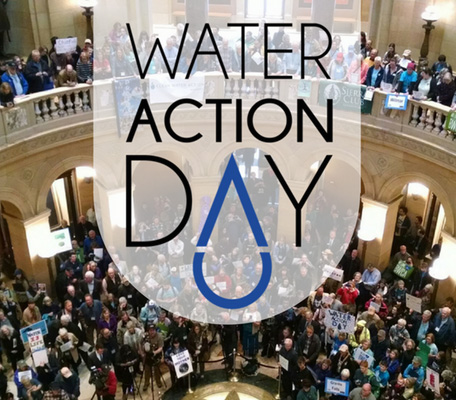 |
Registration is open for Water Action Day 2018!
Whether you joined us for our Water Action Day event last year or you’re a first timer, we hope to see you at the Capitol on May 2! This is your chance to show up and stand up to protect our waters!
This all-day event will include free breakfast and briefings in the morning, both on how to actively engage legislators and on the water issues that we face in Minnesota. Throughout the day, attendees will meet with legislators to ask them to protect our water, and the Clean Water Rally will be held in the Capitol Rotunda at 1:30 pm. Sign up today and find out how you can volunteer and support this important event!
|

|
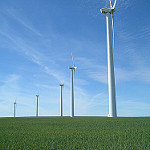 |
Minnesota is in the midst of a massive and historic energy transformation
(From MinnPost) — Minnesota is on the front lines of a clean energy transformation that is reshaping the U.S. energy landscape. Increased use of clean energy sources and strong and consistent investments in energy efficiency are saving Minnesotans money and creating tens of thousands of jobs. The question? How do we build on this success? The Business Council for Sustainable Energy and Bloomberg New Energy Finance recently released its 2018 Sustainable Energy in America Factbook. The data told a compelling story: Energy businesses are thriving and growing faster than many imagined possible. It also stated that energy efficiency, renewable energy, and natural gas are — together — dominating today’s energy economy. >>Read More.
|

|
 |
Safety tops talk at bike summit
(From Rochester Post Bulletin, featuring MEP member Bicycle Alliance of Minnesota) — Ed Denbow said he sees both sides of the issue when it comes to creating new bike lanes. As a daily bicycle rider who logged more than 5,000 miles last year, he said safety is a priority.As a homeowner in the Country Club Manor neighborhood, he knows his neighbors are concerned about a proposed bike-lane project that could reduce on-street parking, which some worry would affect property values. “Being retired, you are always concerned about values going down.” he said. However, he said he expects changes could address unsafe biking conditions in the area, which includes Harriet Bishop Elementary School. >>Read More.
|
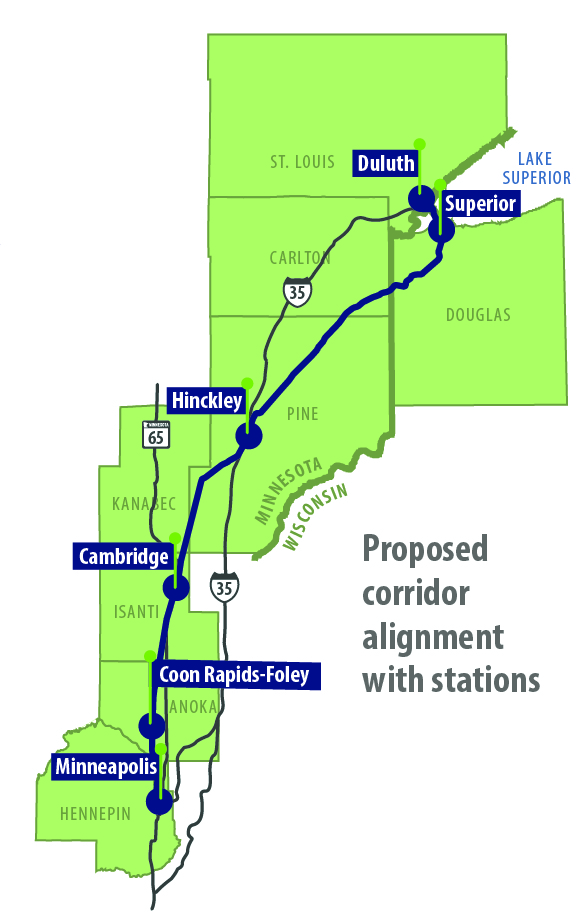 |
Northern Lights Express project cleared to seek funding
(From Duluth News Tribune) — Having cleared a pair of environmental hurdles recently, the proposed half-billion-dollar passenger train between the Twin Ports and Twin Cities is proceeding to its next phase — namely seeking funding for final design and construction, said a Minnesota Department of Transportation news release on Wednesday. The Northern Lights Express Higher Speed Intercity Passenger Rail Project was found to have no significant environmental barriers and will not require an Environmental Impact Statement, MnDOT said. Processes and public comment periods by both the Federal Railroad Administration and MnDOT came to similar conclusions in recent months. The Federal Railroad Administration’s “Finding of No Significant Impact on the Tier 2 Project Level Environmental Assessment” was the most recent conclusion on the 152-mile project corridor. That finding in late February clears the way for the project to move forward, MnDOT said. >>Read More.
|

|
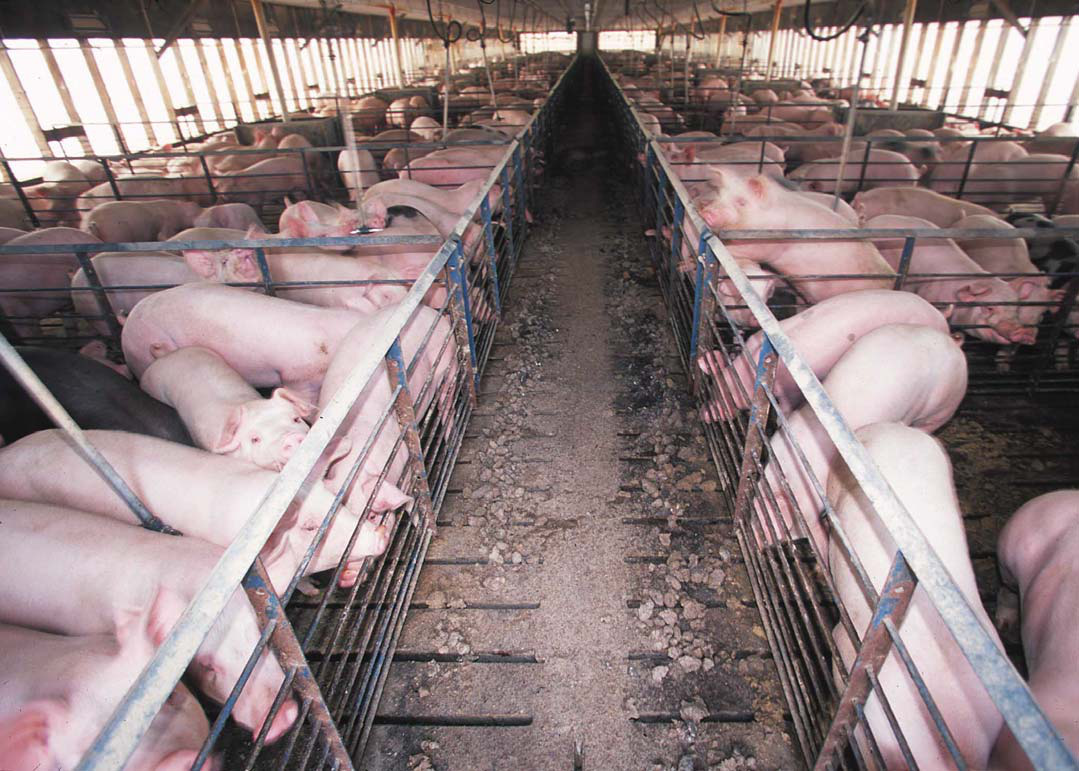 |
A family goes to war with the dozen factory farms that surround them
(From City Pages) — Eighty-eight-year-old Lowell Trom was born on his family’s farm about an hour southeast of the Twin Cities. This is land his parents purchased back in 1925, land he’s worked for the last 75 years, harvesting corn and soybeans with his two sons. When you’ve been living and working on the same farm for three-quarters of a century, you get to see agriculture evolve first-hand. Over the years Dodge County, where the Troms live, has welcomed a thicket of factory farms where thousands of pigs, pumped full of antibiotics, huddle in windowless buildings. >>Read More.
|
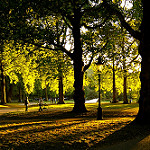 |
Your yard is a powerful force against climate change
(From MPR News) — City yards are more than just idle patches of grass. They’re also powerful traps of carbon — a primary cause of the warming climate, put into the atmosphere as a gas by human activity. A new study from University of Wisconsin-Madison researchers Carly Ziter and Monica Turner finds that spaces like backyards or public parks can store more carbon than urban grasslands or forests. That means even the smallest urban green spaces are a major factor in how the natural world is holding down rising temperatures. For the study, Ziter took soil samples from a variety of locations in Madison and measured how different features on the urban landscape store carbon, affect water quality and mitigate floods. >>Read More.
|

|
 |
Apply now to be a Minnesota GreenCorps Host Site!
The Minnesota Pollution Control Agency (MPCA) is now accepting applications from organizations interested in serving as host sites for the 2018 – 2019 Minnesota GreenCorps program year. Minnesota GreenCorps is an environmentally focused AmeriCorps program coordinated by the MPCA. The program places AmeriCorps members with organizations around the state to spend a year of service addressing critical environmental issues. Eligible organizations include public entities, school districts, not for profit institutions of higher education, and 501 (c)(3) nonprofit organizations.. Applications are due by 5:00 pm CDT on Friday, March 23, 2018.
Host site application materials, including a detailed guidance document and the application are available on the Minnesota GreenCorps website.
|

|
 |
Regulators OK environmental review for disputed northern Minnesota oil pipeline
(From Pioneer Press) — Minnesota regulators approved the final environmental review Thursday for Enbridge Energy’s proposal to replace its aging Line 3 crude oil pipeline in northern Minnesota, setting the stage for a final decision on the disputed project in June. The Public Utilities Commission voted unanimously to declare the review “adequate,” meaning it met the legal requirements, after ordering rewrites in December in four narrow areas dealing mostly with proposed route alternatives. “You’re going to make a really important decision here in a couple months,” Brent Murcia of Youth Climate Intervenors, which opposes the project, told the commission. >>Read More.
|
Weekly Environmental Trivia – Answers Below Job Postings!
|
 |
1. What state park, known for its namesake lake, is the oldest and second-largest in Minnesota?
2. Minnesota rivers flow into the Great Lakes, the Gulf of Mexico, and what other body of water?
3. What Minnesota city and county are named after the Ojibwe word for wild rice?
|
|
|